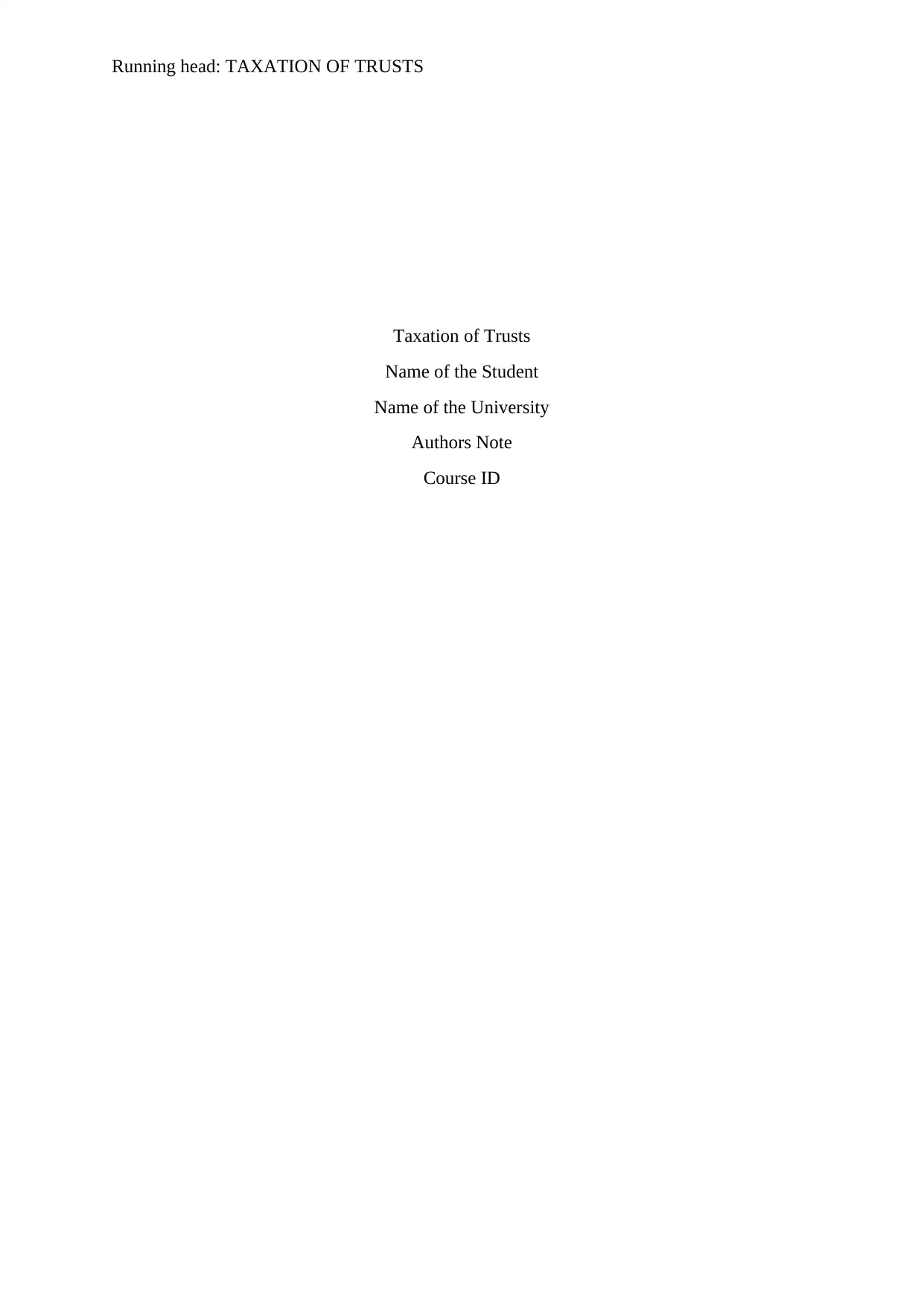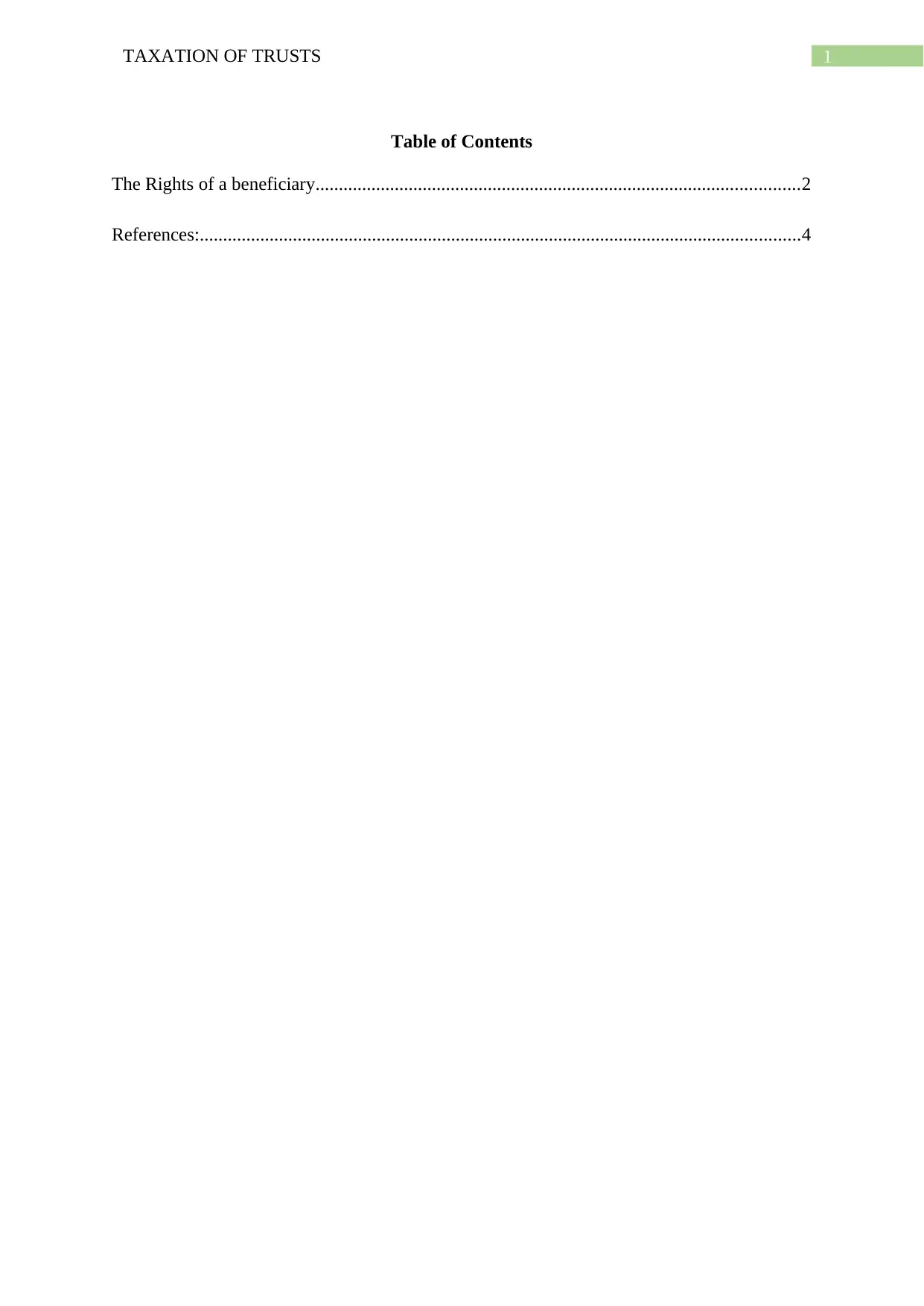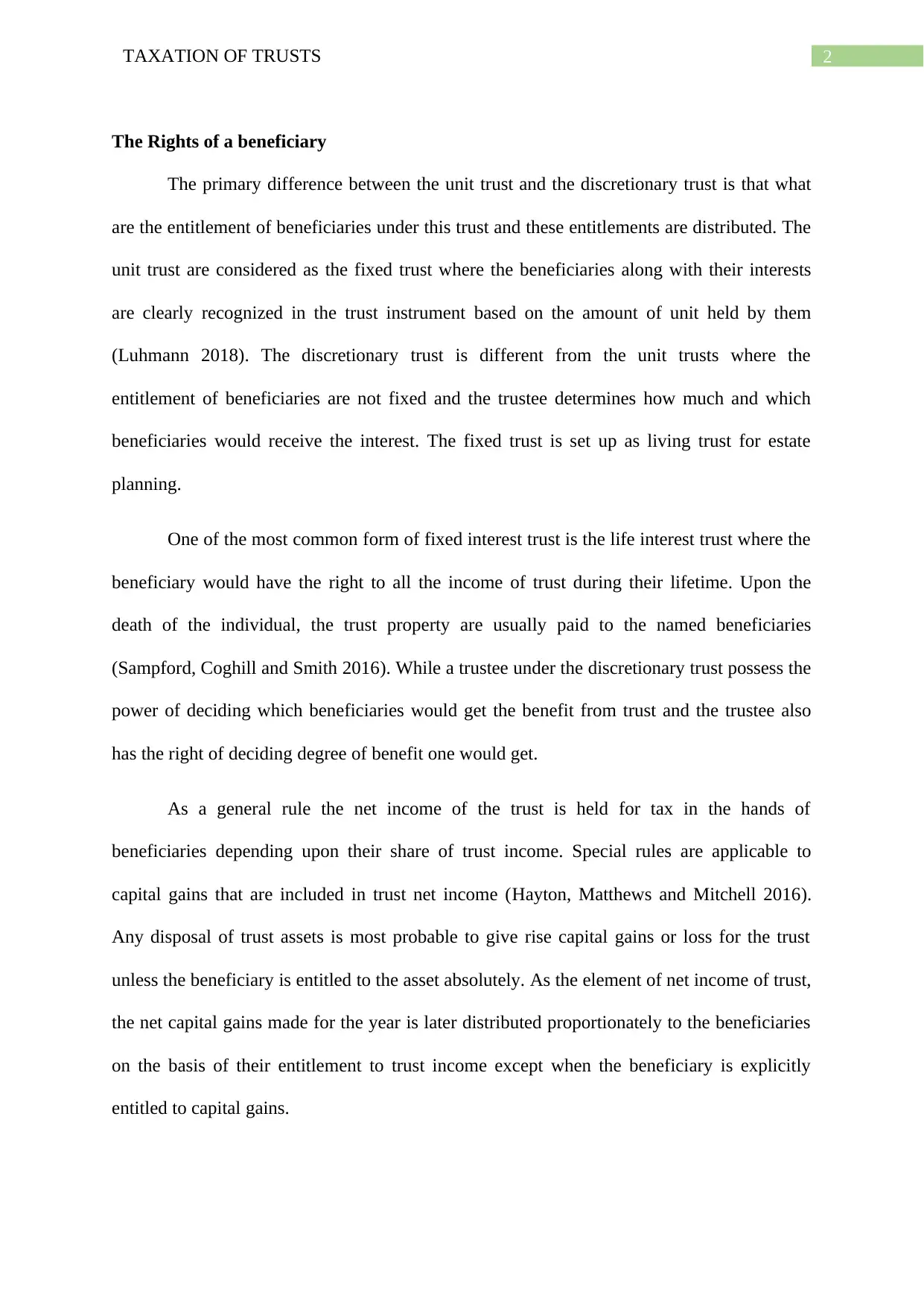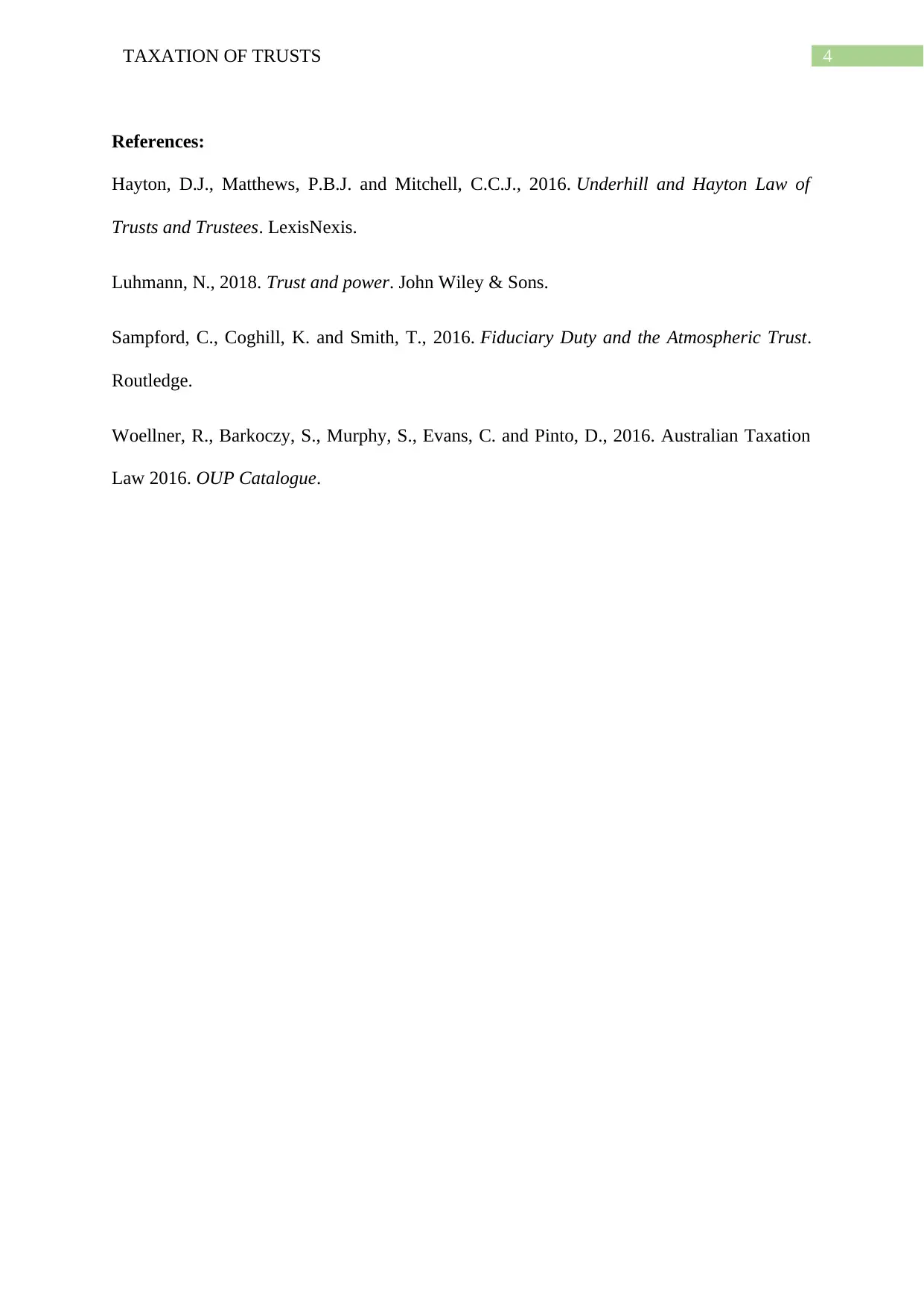Taxation of Trusts
VerifiedAdded on 2023/01/13
|5
|690
|77
AI Summary
This document discusses the taxation of trusts and focuses on the rights of beneficiaries. It explains the differences between unit trusts and discretionary trusts and how trust income and capital gains are taxed. The document also provides examples and references for further reading.
Contribute Materials
Your contribution can guide someone’s learning journey. Share your
documents today.
1 out of 5











![[object Object]](/_next/static/media/star-bottom.7253800d.svg)